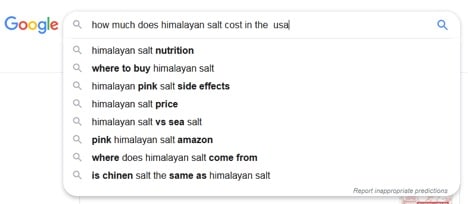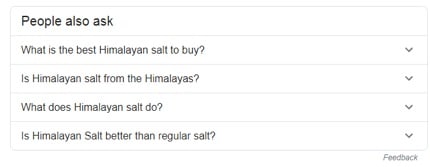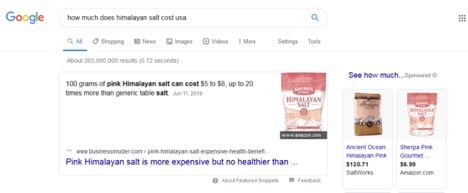SEO trends change every passing year. 2017, for example, was all about authority profiles and indexed age. 2018 focused on mobile websites and voice search, intent optimization and user experience, instant answers and ease of use. 2019 saw the rise of mobile-first indexing, optimizing for Amazon searches, and blockchain technology. But while all kinds of trends arise from one year to the next, there’s always one constant: content.
Forbes has made a number of predictions about trends that will rule the SEO arena in 2020. They include organic and local SEO, PPC, and again, the constant: SEO and Blogging.
So the brouhaha about content being king is no joke. Forbes has called it the “indisputable backbone of your website SEO strategy.”
The good news? There are great ways to build a strong backbone to keep your website getting traffic!

How do you know that your pages are being crawled? How do you ensure that they’re being indexed? Well, you can’t know, unless you perform an audit. It’s like being tasked with making a foul-smelling kitchen smell nice - but you don’t know where the smell is coming from. An audit is the technical foundation of professional SEO.
An SEO audit will tell you everything there is to know about how well your website is performing: its speed, how well it’s built, the quality of its code, and issues with content - such as duplicate content.
Audits take anywhere between 10 and 50 hours, mostly depending on the size of the website. Simply put: to create great content for your website, you’ll need to know if there are any issues with your content, especially duplicate content and plagiarism issues.
An audit will tell you if these exist.

While it’s true that Larry Tesler took threeyears to invent copy-paste (from 1973 to 1976), it takes a lot less time to use it, which is why so many people plagiarize content.
Plagiarism isn’t just wrong and lazy - it’s illegal. You can be sued by the original content creator, and then you’ll have the added expense of reputation management on your shoulders. Besides, it’s not like plagiarized content adds value to your website.
Moreover, you’ll be known as a content thief and an untrustworthy business if you take this route. Audiences will never see you as reliable if you can’t even write your own content. It’s a comprehensively bad idea.
And if you think there are ways of going around the cut-and-paste kind of plagiarizing, you’re wrong. Patch writing might be rewriting in the crudest sense, but it’s still plagiarism. We can be sure that in the coming years, algorithms will be able to detect if you’re tweaking phrasing from a website and still using plagiarized content.
[insert page='top-10-best-online-plagiarism-checker-tools-and-websites' display='single-related-article-02.php']
Plagiarized content isn’t duplicate content. Duplicate content is original content from your own website that you’ve used over and over again on several of your pages - or several times on the same page.
Look at these examples. The fact that this is the UK’s “best” and “biggest” car leasing service is repeated multiple times. And this is only the home page. Also, declaring that you’re the best or the biggest in any arena is a bad idea altogether.
For example, the Google Quality Rater Guidelines don’t mention duplicate content - they mention copied content and state that websites with such content should be ranked the lowest. So while copied content is penalized and websites with such content blacklisted, duplicate content is treated differently.
It is still not a good idea to keep duplicating the same content. It makes you look lazy, it’s a turn-off for audiences, and it doesn’t earn you any brownie points with Google.
[insert page='seo-in-2020-what-to-expect' display='single-related-article.php']
If there’s one thing everyone knows for a fact about SEO, it’s this: using keywords is non-negotiable. Even the most uninformed layperson knows that SEO hinges upon keywords. But keywords are more complicated than you’d think.
One way of ensuring you’re using the highest-ranking keywords for your industry niche is by creating topic clusters for yourself, using a keyword tool to formulate a list of potential keywords, and group keywords together based on intent.
Create Topic Clusters: Include everything that your company does or provides. Whether it’s a main topic or a subtopic doesn’t matter. An easy way of doing this is to list each service you have.
Use a Keyword Tool: Use one of the many keyword tools available to check if the cluster of keywords you’ve selected is okay in terms of difficulty. The keyword tool will also provide variations for you. For your first page, filter out the results by going with the terms that are most relevant to your business.
Also use these results to formulate long-tail keywords. User intent is important here. Run a few Google searches to figure out how a user will use a cluster of relevant keywords. Shape your long-tail keywords around the most popular search entries.
Here’s an example. Let’s say you import Himalayan salt and sell it inside the U.S. When you write “how much does pink Himalayan salt cost” in the search bar on Google, Google will show you a number of potentially similar things people search for:

Further down, you’ll find something like this:

Targeting the “People Also Ask” section is a great way to optimize your content based on user intent. It gives you insights into what potential customers are most concerned about.
Group Them Together: Now that you have a list of potentially high-ranking keywords, long-tail keywords, and insight into customer intent, here’s the final step. Try to come up with one umbrella term. Not only do you now have a list of keywords that has depth, topic-wise, but they’re also designed to answer almost all related searches.

For years now, SEO “junkies” have been creating “SEO content” that is little more than stuffing of keywords on one page. Here’s an example of what not to do when creating SEO content:
WE SELL HIMALAYAN SALT! It’s pink, and it’s HIMALAYAN! Himalayan salt is great for health! It’s exotic and rare. Our Himalayan salt is sold at the CHEAPEST RATES and is the BEST in the country. Believe us, you can buy Himalayan salt from us at the best rates and quickest delivery times. To buy Himalayan pink salt from us today, give us a call at 666-666-666!
Not only has this fictional Himalayan salt seller stuffed their content with their keyword, but they’ve also made sure to put it in bold in case anyone misses out on every single mention of it. This, to audiences, is a hallmark of bad SEO content.
Use Your Keyword Clusters: Your keyword and Google research will give you enough insight into what your audience is looking for. Creating content around these concerns is always a great idea.
Use the Zero Rank: Remember those “People Also Ask” tabs? That’s the zero rank on Google. If your content answers a particular question, your website will show up on this section, and audiences are likelier to visit it.
Answer Questions: Let’s take a look at the Himalayan salt search again. Here’s what you’re likely to see as the topmost results on your search:

The topmost result on Google isn’t a link from a website - it’s an answer to a question people are asking. Business Insider answers that question in one of their articles, and hence, they show up as the topmost result - and the result most people will be clicking on.
You probably already know how important it is to optimize content. Without optimization, your website will have no connection with any search engines.
You won’t show up in any searches on any SERPs and nobody will visit your website. Without site visitors, you’ll have no conversions and subsequently no customers. It’s bad for business, so to speak.
Here are a few tips on getting optimization right:
This goes without saying, but create good content. As a rule of thumb, ensure that your content:

Be very careful about your words and phrases. “Childcare juice” sounds suspiciously bad. You also don’t want to sound insensitive, politically incorrect, or simply mean at that.